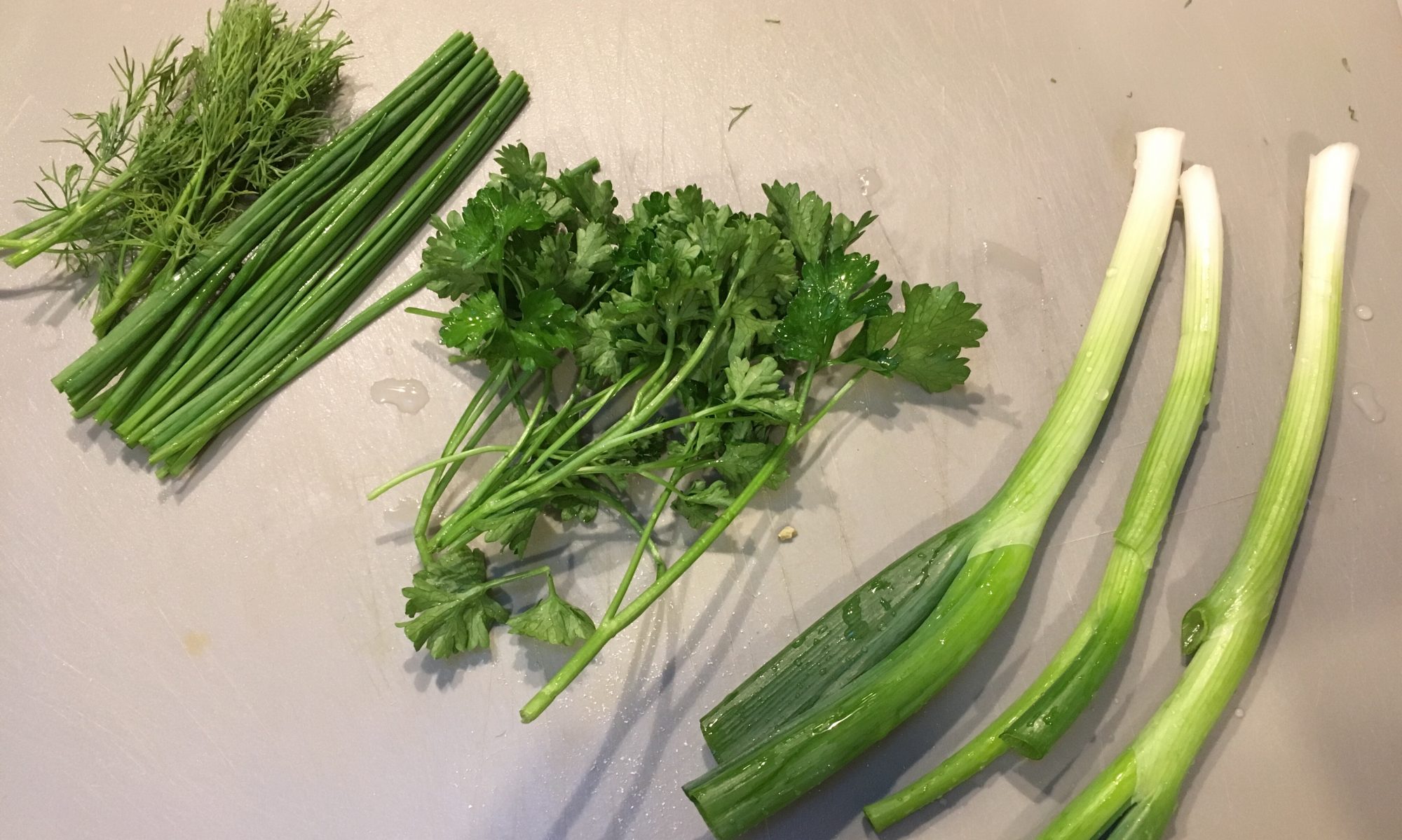We bought a really big pack of Za’atar a couple of weeks ago, and the first thought I had (apart from cooking more cauliflower fritters) was that it would somehow make its way into bread.
First we made some sourdough manakish: a sort of flatbread topped with a paste made of za’atar and olive oil. That was very good!
Then I had an idea: what about making a hybrid between manakish and a ‘classic’ loaf?
For a first attempt, it wasn’t totally bad, but I don’t think it quite worked either.
It turned out to be quite impractical (it falls apart so it’s not easy to slice or toast), but it is edible, so there you go!
Here’s how I made it, for future reference and for you to try and make it better than I did, if you’re so inclined…
Ingredients
The same ingredients as in the sesame seed bread, but without the sesame seeds.
Plus:
- a good amount of za’atar
- and proportional amount of olive oil
Preparation
Follow the sesame seed bread recipe (sans the sesame seeds in the dough), until you reach the point in which you shape the dough balls and leave them to rest before going into the loaf tin…

… and then it’s time to prepare the za’atar paste while the dough rests.
Add some za’atar to a little bowl:

Then add olive oil and stir, and repeat until it becomes a spreadable paste:

Assuming the dough has finished resting, flatten one of the balls using a rolling pin or your hands, if you’re capable of flattening dough with some degree of uniformity. I can’t, so I use a rolling pin:

Cover about 3/4 of the surface with your za’atar paste.
I was thinking in the same terms as when you roll sushi: you need to leave an area without rice on the nori or otherwise it won’t “seal”.

Then roll it, leaving the uncovered area for last:

Then carefully lift it and place it on the loaf tin, making sure the seam stays underneath:

I managed to flatten the second ball way thinner:

In retrospect, I put way too much paste (you will see why later):

Since it was thinner, there were more ‘turns’ when rolling it. And off it went to the other loaf mould:

Cover the loa(f/ves) and leave to prove until ‘it seems enough’. You could also turn the oven on when the loaves are starting to look ‘active’.

Then score them:

And bake, preferrably using steam, until golden:

You can see that the bread opened to reveal its secret heart of za’atar. I am still not sure if I like the effect or not…


I’m also not really sure why the loaves are so lopsided!
Leave to cool down before cutting into it.

Sliced…

I don’t know about you, but I can’t stop seeing the SCREAM from Edvard Munch in these slices.

This picture shows the fundamental problem with this technique: the layer of za’atar acted as a ‘separation’ between the layers of dough when rolling, and the bread just falls apart when handling it.
In other ‘novelty’ loaves with colour streaks the dough is still the same consistency or the separation between layers is minimal so it all binds together nicely. Not so here… 😱
The emoji is warranted!

It was quite a challenge to toast this on the toaster, as there were sesame seeds and za’atar bits falling all over, and the slice was “collapsing” even more after toasting (as it shrunk).
I was very grateful for my chopstick skills that allowed me to pick small pieces out of the toaster, but I still had to spend some non-insignificant amount of time removing za’atar remains from the toaster, lest they initiate a small fire… 😱
I think if I were to make this again, I would…
- be less generous with the amount of za’atar in the paste, so it would not act as much as a barrier
- reconsider where to apply the paste, so the bread keeps a better shape when scored on top (maybe just apply the paste to the half of the surface?)
An additional problem with using so much za’atar is that it sort of defines the type of food you can have this bread with. It does work well with “Mediterranean” such as slices of tomato and some more olive oil, but butter is just not appealing at all with it.
Oh well, live and learn! 🙂

